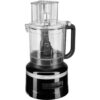The Balance Sheet Assets, Liabilities and Owners’ Equity
Below liabilities on inventory cycle for manufacturers retailers and distributors the balance sheet, you’ll find equity, the amount owed to the owners of the company. These are listed on the bottom, because the owners are paid back second, only after all liabilities have been paid. All this information is summarized on the balance sheet, one of the three main financial statements (along with income statements and cash flow statements). These may include loans, accounts payable, mortgages, deferred revenues, bond issues, warranties, and accrued expenses.
Definition of the Accounting Equation
As a core concept in modern accounting, this provides the basis for keeping a company’s books balanced across a given accounting cycle. The accounting equation is often expressed as an accounting formula and states that the sum of liabilities and equity is always equivalent to the total assets of the organization. It is the fundamental foundation of accounting that ensures financial statement accuracy. Balance sheet is the financial statement that involves all aspects of the accounting equation namely, assets, liabilities and equity. A balance sheet provides accurate information regarding an organization’s financial position at a specific point related to its reporting period. The equation is generally written with liquidity in small business liabilities appearing before owner’s equity because creditors usually have to be repaid before investors in a bankruptcy.
As such, the balance sheet is divided into two sides (or sections). The left side of the balance sheet outlines all of a company’s assets. On the right side, the balance sheet outlines the company’s liabilities and shareholders’ equity. If a business buys raw materials and pays in cash, it will result in an increase in the company’s inventory (an asset) while reducing cash capital (another asset).
Management
Holders of common stock elect the corporation’s directors and share in the distribution of profits of the company via dividends. If the corporation were to liquidate, the secured lenders would be paid first, followed by unsecured lenders, preferred stockholders (if any), and lastly the common stockholders. A current asset whose ending balance should report the cost of a merchandiser’s products awaiting to be sold. The inventory of a manufacturer should report the cost of its raw materials, work-in-process, and finished goods.
For example, Netflix has effectively used debt to finance its rapid global expansion while maintaining a manageable debt-to-equity ratio. Being an inherently negative term, Michael is not thrilled with this description. For the past 52 years, Harold Averkamp (CPA, MBA) hasworked as an accounting supervisor, manager, consultant, university instructor, and innovator in teaching accounting online. When inventory items are acquired or produced at varying costs, the company will need to make an assumption on how to flow the changing costs.
Managing AP efficiently is crucial for maintaining cash flow, supplier relationships, and financial stability. Businesses can leverage accounts payable automation tools to optimize processes and reduce errors. The purpose of the accounting equation is that it lays the framework for the accounting processes and ensures integrity in financial transaction recording. It plays a crucial role in preparing financial statements that enables analyzing a firm’s financial health while ensuring transparency in accounting processes. An asset is a resource that can provide current or future economic benefit to the organization who owns or controls the asset. Assets are reported on a company’s balance sheet and comprises various asset types such as intangible assets, financial assets, fixed assets and current assets.
External auditors, on the other hand, might use a balance sheet to ensure a company is complying with any reporting laws it’s subject to. Typically, a balance sheet will be prepared and distributed on a quarterly or monthly basis, depending on the frequency of reporting as determined by law or company policy. In this article, we will explore the components of the accounting equation, its importance in finance, and real-world examples that illustrate its significance. The accounting term that means an entry will be made on the left side of an account. As you see, ACI’s assets increased and its liabilities increased by $7,000. As you can see, ASC’s assets increased and ASC’s liabilities increased by $7,000.
Net Change Formula
Valid financial transactions always result in a balanced accounting equation which is the fundamental characteristic of double entry accounting (i.e., every debit has a corresponding credit). If the total assets calculated equals the sum of liabilities and equity then an organization has correctly gauged the value of all three key components. However, if this does not match then organizations need to check for discrepancies.
You both agree to invest $15,000 in cash, for a total initial investment of $30,000. Get free guides, articles, tools and calculators to help you navigate the financial side of your business with ease. After enrolling in a program, you may request a withdrawal with refund (minus a $100 nonrefundable enrollment fee) up until 24 hours after the start of your program. Please review the Program Policies page for more details on refunds and deferrals. Updates to your enrollment status will be shown on your account page.
The Accounting Equation: Assets = Liabilities + Equity
After saving up money for a year, Ted decides it is time to officially start his business. He forms Speakers, Inc. and contributes $100,000 to the company in exchange for all of its newly issued shares. This business transaction increases company cash and increases equity by the same amount. Owners can increase their ownership share by contributing money to the company or decrease equity by withdrawing company funds.
The Significance of Debt Management and Capital Structure
If you were to take a clipboard and record everything you found in a company, you would end up with a list that looks remarkably like the left side of the balance sheet. Shareholders’ equity is the total value of the company expressed in dollars. Put another way, it is the amount that would remain if the company liquidated all of its assets and paid off all of its debts. The remainder is the shareholders’ equity, which would be returned to them.
At the heart of HighRadius’s R2R solution is an AI-powered platform designed to cater to all accounting roles. One of the standout features of the solution is its ability to automate almost 50% of manual repetitive tasks. This small business tax information is achieved through LiveCube, a ‘No Code’ platform, that replaces Excel and automates data fetching, modeling, analysis, and journal entry proposals. Here we can see the list of all liabilities that have been reported on Hershey company balance sheet for 2023.
- Please refer to the Payment & Financial Aid page for further information.
- This is consistent with financial reporting where current assets and liabilities are always reported before long-term assets and liabilities.
- Proper asset valuation and management are essential for businesses to maintain a healthy balance sheet and maximize their potential.
- Ted decides it makes the most financial sense for Speakers, Inc. to buy a building.
- Since the gain is outside of the main activity of a business, it is reported as a nonoperating or other revenue on the company’s income statement.
- The inventory of a manufacturer should report the cost of its raw materials, work-in-process, and finished goods.
- Therefore, you should always consult with accounting and tax professionals for assistance with your specific circumstances.
Owner contributions and income result in an increase in capital, whereas withdrawals and expenses cause capital to decrease. Long-term liabilities, on the other hand, include debt such as mortgages or loans used to purchase fixed assets. When the allowance account is used, the company is anticipating that some accounts will be uncollectible in advance of knowing the specific account. As a result the bad debts expense is more closely matched to the sale. When a specific account is identified as uncollectible, the Allowance for Doubtful Accounts should be debited and Accounts Receivable should be credited. The credit balance in this account comes from the entry wherein Bad Debts Expense is debited.
- Which is why the balance sheet is sometimes called the statement of financial position.
- Ted is an entrepreneur who wants to start a company selling speakers for car stereo systems.
- If the total assets calculated equals the sum of liabilities and equity then an organization has correctly gauged the value of all three key components.
- If the corporation were to liquidate, the secured lenders would be paid first, followed by unsecured lenders, preferred stockholders (if any), and lastly the common stockholders.
- Assets are the resources your business uses to operate and generate revenue.
The balance sheet equation is the foundation of the dual entry system of accounting. It shows that for every debit, It shows that there is an equal and opposite credit for every debit, and the sum of all the assets is always equal to the total of all its liabilities and equity. The balance sheet is just a more detailed version of the fundamental accounting equation—also known as the balance sheet formula—which includes assets, liabilities, and shareholders’ equity. In above example, we have observed the impact of twelve different transactions on accounting equation. Notice that each transaction changes the dollar value of at least one of the basic elements of equation (i.e., assets, liabilities and owner’s equity) but the equation as a whole does not lose its balance.
Owners’ equity, also known as shareholders’ equity, typically refers to anything that belongs to the owners of a business after any liabilities are accounted for. Owner’s equity is a crucial metric for investors and stakeholders, as it reflects a company’s net worth and financial stability. A strong owner’s equity can signal a healthy, growing business, making it an attractive investment opportunity. For example, Apple’s consistently rising owner’s equity has contributed to its reputation as a solid long-term investment.
The brilliance of the double-entry system lies in its self-balancing mechanism, acting as a check-and-balance system to reduce errors and uphold financial data integrity. Double entry system ensures accuracy and completeness in its accounting system. This methodical approach is fundamental to the accounting system’s integrity.













